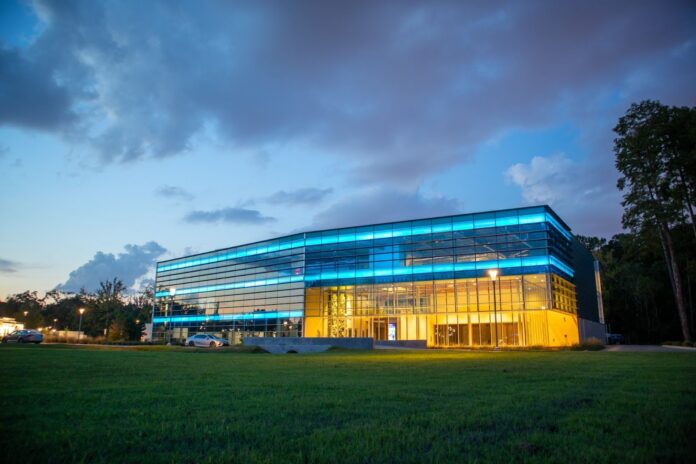Image Source: Photo by Elifin Realty on Unsplash
If you’re reviewing commercial property for sale with the hope of investing, you may be drawn to popular choices like office buildings and multifamily apartment complexes.
However, commercial property investments, and the demand for certain types of properties, have undergone a major shift over the last three years.
Although this was initially a result of the COVID epidemic, some CRE is thriving even as COVID numbers continue to fall. (We’ll look at these in detail later in this article.)
When investing in commercial property, it’s worth looking at industry trends. This will help you identify overlooked types of investment properties and lead to more profitable investment decisions.
But before we get into that, here’s a quick overview of commercial property for sale and how it works.
How to Identify and Analyze Commercial Property for Sale
Commercial real estate is property that’s used for business-related purposes. Unlike residential real estate, these properties are designed and constructed to house business staff and equipment.
An exception to this is multifamily property, which is technically residential real estate but bought and sold as commercial real estate.
The majority of commercial properties are constructed for one of the following uses: office, industrial, multifamily, or retail.
For example, a warehouse is classified as industrial property, while an apartment complex is a multifamily property.
Office real estate may be a low-rise or high-rise building or situated within a mixed-used building with retail shops on the street level.
Types of retail CRE include shopping malls, hotels, restaurants, event venues, and regular storefronts.
In addition to defining CRE by type, a potential investor will want to consider the property’s classification.
The Different Classes of Commercial Properties
This classification will make a big difference in how you approach, finance, and flesh out the investment itself.
- Class A defines the best options. The building’s age, quality, curb appeal, and location are the best.
- Class B buildings tend to be older than Class A buildings. Experienced investors often choose a Class B building to remodel into something more profitable.
- Class C buildings are older than Class A and B buildings, often in high-risk areas, and almost always need work before leasing.
Now that we’ve gone over the basics, here are some recommendations for today’s commercial property investor.
CRE Choices for the “New Normal”
While office buildings have been popular investments, other types of properties, including self-storage and life science buildings, are edging ahead of them. Here’s why.
Millions of office workers continue to work at home in 2022. The remote work trend began after the COVID pandemic’s March 2020 arrival.
As lockdowns continued, research into remote work was conducted:
- Many respondents were more productive within a home office environment.
- 55% of workers put in more time when working remotely.
Businesses realized that remote work would reduce their office space rents and expenditures. Therefore, some owners of office CRE are coping with increasing vacancy rates.
Here are some alternatives which may deliver lower vacancy rates and higher returns.
The Rise of the Specialty Property
Here are some emerging CRE investments that have become top investment picks.
Storage units and warehouses are becoming popular commercial real estate business investments.
While consumers were forced to shop online in 2020, many decided to continue doing so. E-commerce saved time and money since online sellers weren’t paying for retail space and staff.
Not only do e-commerce establishments like Amazon need warehouse space, but big box retailers are needing more warehouse space because of e-commerce competition, rising inventory levels, and ongoing supply chain glitches.
In addition, leases for warehouse CRE tend to be longer-term than for other types of commercial space.
Medical laboratories and life science buildings are also taking off as the industry continues to expand and recover from a slight slowdown earlier in the year.
These industries, often grouped under the “life sciences” name, include pharmaceuticals, medical devices, and even genetic therapies and research.
Life sciences tenants require CRE with areas that can be converted to clean rooms, while others will be conducting business in laboratories.
Many types of life science research are conducted in carefully-controlled environments known as “clean rooms”.
Photo by Unsplash
In contrast, genomics and digital healthcare tenants will need less space and fewer custom buildouts.
If you’re especially interested in CRE that caters to the life sciences industry, you may want to look into a real estate syndicate that specializes in life sciences.
Real Estate Syndication
Like being one of several co-borrowers, real estate syndicates offer investors an opportunity to get on the ground floor of a CRE purchase or even a “build to suit” project without the need to be a landlord or worry about property management.
How Does Real Estate Syndication Work?
Real estate syndication is simple: It’s the pooling of investor resources to acquire CRE. They’re generally created as partnerships, where a syndicator researches a potential CRE purchase, and several investors join the syndicate by pledging funds.
If investing in a growing trend appeals to you, it could be worth finding a specialized syndicate with investments in life sciences. Here are some reasons why:
- Life sciences real estate is generally immune to remote work since most staff will be working in laboratories, clean rooms, and other similar environments.
- The need for life sciences CRE is growing rapidly within North Carolina’s Research Triangle, which is home to Duke University and other prestigious schools.
- Other cities that are becoming life sciences destinations include San Francisco, Boston, Cambridge, and San Diego.
If investing through a real estate syndicate seems like an attractive option, be sure to research your CRE investment options and the syndicate’s management and track record before taking the next step.
Write and Win: Participate in Creative writing Contest & International Essay Contest and win fabulous prizes.
















